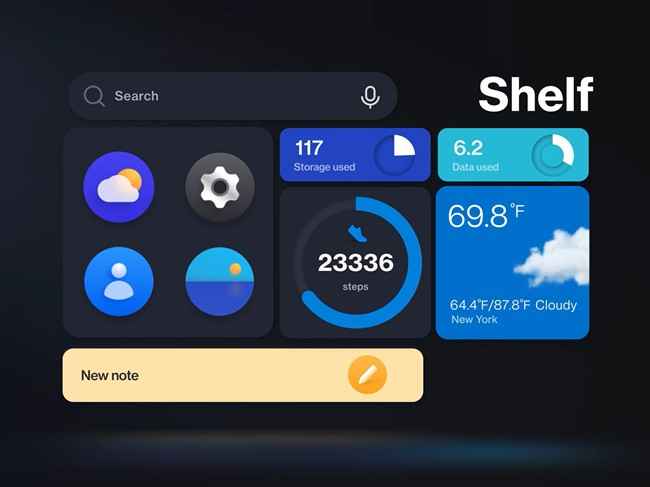
Monday, 28 February 2022
OnePlus confirms that OxygenOS and ColorOS will retain individuality, no unified OS https://www.digit.in vasan.gs@9dot9.in (G. S. Vasan) OnePlus had announced it will be merging its OxygenOS and its sister concern Oppo’s ColorOS for an unnamed Unified OS. This was all part of its OnePlus 2.0 vision and something tech media started calling as Oppofication of OnePlus and OxygenOS. There was a lot of backlash from the OnePlus community and the larger tech media and Android fans. Well, probably owing to the mounting pressure from these social groups, the company has decided to call off its plans for this Unified OS. In other words, OxygenOS and ColorOS will retain their individuality, even though the internal codebase between the two OSes will be the same. Now, that’s a major development, albeit a bit nebulous, not gonna lie. So, let’s try to read into what OnePlus has disclosed recently. OxygenOS 13: What to expect At a recent media roundtable, OnePlus c-suite said, “Our software philosophy for Oxygen OS has always been to offer users a light and clean experience that is close to stock Android and oriented towards usage globally. With Oxygen OS 13, we want to deliver an experience that long-time OnePlus users will be familiar with while ensuring it upholds hallmarks of Oxygen OS, like a fast and smooth experience, burdenless design, and ease of use. Oxygen OS 13 will retain its unique visual design and a range of exclusive customization features.” Now, there are a few mixed signals here. As in, on one hand, they are talking about going back to their vanilla Android roots but also plans of continuing the customization features. Now, we are not sure if they are referring to the core OxygenOS features like Shelf, or the new thingies like the ColorOS launcher. Also, one other thing that we came to know is the involvement of Google in the cooking of this new software. However, whether this is just the usual role it plays in guiding Android updates, we aren't sure. We will have to wait and see how this would materialize. For more news, buying guides, features, reviews, and everything else tech-related, keep reading Digit.in. https://ift.tt/Kt5PlU1 March 01, 2022 at 01:09PM

Qualcomm unveils Snapdragon X70 5G modem and FastConnect 7800 with WiFi 7 and Bluetooth 53 at MWC 2022 https://www.digit.in vasan.gs@9dot9.in (G. S. Vasan) Qualcomm showed what’s it’s been prepping in its labs for the coming generation of Android flagships. This includes a Snapdragon X70 5G modem and FastConnect 7800 with WiFi 7 and Bluetooth 5.3. You see these would be the tech that you will come to see in the upcoming handsets, starting with the top-tier ones of course. Well, this may very well be the first time you are coming across a WiFi 7 product because it is as per the company. The company also boasts the ability of FastConnect to deliver CD-quality lossless audio over Bluetooth 5.3. Snapdragon X70 5G Modem Specs and Features Qualcomm calls Snapdragon X70 5G the “world’s only comprehensive 5G modem-RF system family capable of supporting every commercial 5G band from 600 MHz to 41 GHz.” While that’s promising for the 5G buildout, what’s even more inquisitive is its support for a built-in 5G AI processor that should leverage the power of AI to improve “speeds, coverage, latency, mobility, link robustness, and power efficiency”. Qualcomm details the Snapdragon X70 modem features Gigabit 5G, a standalone mmWave support, 5G Dual-SIM Dual-Active (DSDA), 4x downlink carrier aggregation, and uplink carrier aggregation. The claimed upload and download speeds are up to 3.5Gbps and up to 10Gbps. Thanks to a 4nm architecture and something called PowerSave Gen 3, the new modem is said to offer 60% more power efficiency than the precursor. Qualcomm FastConnect 7800 modem Specs and Features This works on a 14nm process and will be powering WiFi 7 and Bluetooth 5.3. Qualcomm has equipped the modem with High Band Simultaneous (HBS) Multi-Link technology that “leverages two Wi-Fi radios for four streams of high band connectivity in 5GHz and/ or 6GHz bands”. Not only that, but FastConnect 7800 also has a four-stream DBS (Dual-Band Simultaneous) that keeps ultra-low latency to 2ms. When it is connected to a 320MHz channel on a 6GHz spectrum, the peak speeds can go up to 5.8Gbps. Meanwhile, it allows 2.4GHz for Bluetooth and lower-bandwidth WiFi. Speaking of Bluetooth, FastConnect drives Bluetooth 5.3 with Dual Bluetooth radios for enhanced connectivity. And interestingly enough, Qualcomm claims FastConnect 7800 can play 16-bit CD lossless quality audio. There are the usual improvements in terms of coverage (2x), efficiency (up to 50%), and overall connectivity (it can pair in half the time). Speaking about the new announcements, Qualcomm VP and GM, Mobile Compute and Connectivity, said, “Coupled with up to 50% lower power consumption and Intelligent Dual Bluetooth with advanced Snapdragon Sound capabilities, FastConnect 7800 is simply the best client connectivity offering in the industry”. For more news, features, buying guides, reviews, and everything tech-related, keep reading Digit.in. https://ift.tt/y9m0tDi March 01, 2022 at 11:42AM
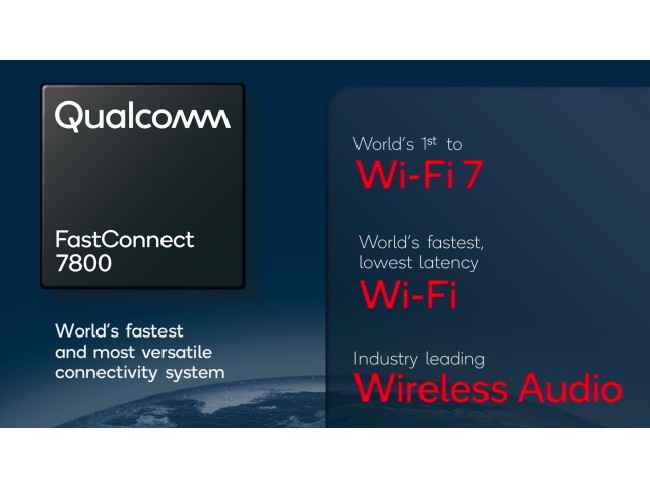
Realme launches Buds Air 3 at MWC 2022, announces Realme GT Neo 3 with 150W fast-charging coming soon https://www.digit.in vasan.gs@9dot9.in (G. S. Vasan) Realme’s MWC 2022 announcements included the Realme Buds Air 3, the impending launch of Realme GT Neo 3 with 150W UltraDart charging, and Realme Book Prime. The new earbuds feature 42 dB Active Noise Cancelation (ANC), 10mm Dynamic Bass Booster that’s backed by Dolby Audio quality, dual device connection support, and up to 30 hours of runtime between charges. The other major product has been the laptop but since it’s already available in the Chinese market as Realme Book Enhanced, we will skim through its specs and features. We shall get into its pricing details as well down below. And also learn a thing or two about the new fast charging tech. Realme GT Neo 3 with 150W UltraDart fast charging: Details This 150W ultraDart fast charging tech claims to be able to top up a battery from 0-50% in 5 minutes even though Realme hasn’t revealed the battery size we are talking about here. The rumoured specs of Realme GT Neo 3 are a 6.7-inch FHD+ 120Hz 10Bit OLED screen, 16MP selfie snapper, a 50MP (IMX766, OIS)+8MP+2MP rear camera setup, a Snapdragon 888, and a 4500mAh battery. Now, the rumours also reveal a Dimensity 8100 variant of the phone with a 5000mAh cell. However, we believe the 150W might be supported by the 4500mAh model of GT Neo 3 as just the other day, Oppo (Realme’s sister concern) also unveiled a 150W SuperVOOC with Battery Health Engine that boasts to fill a 4500mAh battery in 15 minutes. So, we came to this deduction. In the press release, Realme goes on detailing the UltraDart Charging Architecture (UDCA) that is said to support charging between 100 and 200W speeds. The company also underlines the safety measures in place for ensuring the health of the battery and the phone bearing it: First of all, the thrust of charge will be done in Multi Boost Charge Pumps. The temperature will be kept under 43℃ thanks to a Temperature Management Algorithm. The use of “industry-leading lithium batteries” will also apparently sustain 80% of battery capacity even at 1000+ charge cycles. Realme Buds Air 3 Specs, Features, and Price Realme Buds Air 3 sports a 10mm dynamic bass boost driver with a liquid crystal polymer diaphragm. The audio Dolby Audio certified. Similarly, the buds are TUV Rheinland rated for ANC up to 42 dB. Other goodies in the mix are simultaneous dual device connection, IPX5 water resistance, 88ms super-low latency mode, anti-wind call noise cancellation, fast charging, and 30 hours of music playback on a single charge without ANC, but with the case. It will be available in Europe in Blue and White colours at €59.99 (~₹5,085). Realme Book Prime Specs, Features, and Price Model Realme Book Prime Display 14-inch 2K IPS LCD, 400 nits peak brightness, 100% sRGB Software Windows 11 Processor Intel 11th gen Core i5-11320H GPU Intel Iris Xe integrated Camera 720p Keyboard 3-level backlit, 1.3mm key travel, MS precision touchpad Audio 2x Harman Stereo Speakers, 3.5mm headphone jack Connectivity WiFi 6, Bluetooth 5.2, USB-C 3.2 Gen 2, USB-A, 3.1 Gen 1, Thunderbolt 4/USB4 Biometric Fingerprint Power button Battery 54WHr with 65W PD Charger Size 307.21x 228.96x 14.9-15.5mm Price 8+512GB: 999 euros and 16+512GB: 1099 euros For more news, reviews, features, buying guides, and everything else tech-related, keep reading Digit.in. https://ift.tt/ny3C7Sh March 01, 2022 at 11:23AM
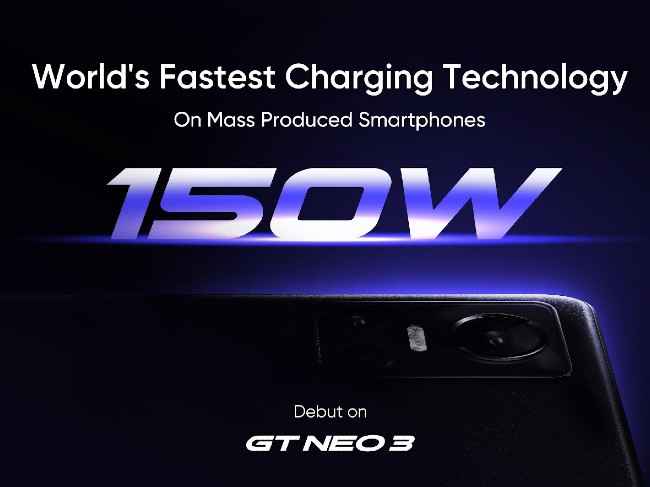
OnePlus 10 Pro confirmed to launch in India by March-end: MWC 2022 https://www.digit.in news@digit.in (Digit NewsDesk) OnePlus 10 Pro is now confirmed to launch by March end in India and globally. We’re getting this information from the OnePlus booth at the MWC (Mobile World Congress) 2022 in Barcelona where a person demoing the OnePlus 10 Pro told us that the phone is due to arrive globally and in India by the end of March. OnePlus 10 Pro debuted in China back in January with Snapdragon 8 Gen 1 chip, 80W fast charging and more. We have been hearing rumours that the OnePlus 10 Pro is scheduled to launch sometime in the third week of March, which falls in line with what we got to know from MWC 2022. We also got a chance to try the OnePlus 10 Pro Global version which you can check out on our social media handles. OnePlus 10 Pro specifications The OnePlus 10 Pro features a 6.7-inch QHD+ (3216x1440 pixels) resolution AMOLED display that supports upto a 120Hz refresh rate. It measures 8.55mm and weighs around 200 grams, having a glass-metal build and is also IP68 certified making it dust and water-resistant. It is powered by the top-of-the-line Snapdragon 8 Gen1 chipset with an octa-core CPU and is paired with upto 12GB LPDDR5 RAM and 256GB UFS 3.1 storage. In China, the OnePlus 10 Pro will come with ColorOS 12 based on Android 12. The OnePlus 10 Pro has triple cameras on the back headlined by a 48MP sensor with an f/1.8 aperture, a 50MP ultra-wide camera with 150-degree FOV and an 8MP telephoto camera with 3.3x optical zoom. The rear cameras are tuned by Hasselblad and can record in 4K UHD at upto 120FPS. On the front, there is a 32MP selfie camera housed within the punch-hole notch cutout in the top-left corner. The OnePlus 10 Pro has stereo speakers along with an in-screen fingerprint reader. It comes equipped with a 5,000mAh battery that supports 80W fast wired charging and 50W fast wireless charging. https://ift.tt/BhWPnVS February 28, 2022 at 07:41PM
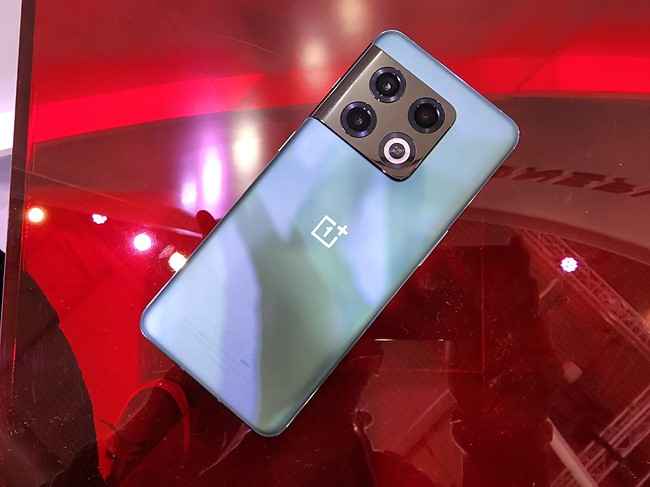
Lenovo launches Legion Slim 7 in India and new IdeaPads, ThinkPads, ThinkBooks, and Tab M10 Plus at MWC 2022 https://www.digit.in vasan.gs@9dot9.in (G. S. Vasan) Lenovo has announced a bunch of laptops at MWC 2022. The newcomers are from its IdeaPad, ThinkPad, ThinkBooks, and Tab lineup. IdeaPads include the IdeaPad Flex 5i, IdeaPad Duet 5i, IdeaPad Gaming 3, IdeaPad Flex, IdeaPad Flex 3i, and IdeaPad Duet 3. The event also broke cover off the ThinkBook 13s Gen 2, ThinkBook 14s Yoga Gen 4, ThinkPad X13s, ThinkPad X1 Extreme, and Tab M10 Plus. Now while all these are yet to make their way to our country, the Legion Slim 7 is something that has launched today in India. That’s a lot of machines. Let us check out their speeds and feeds one by one, starting with the one available in India now: Lenovo Legion Slim 7 Specs and Features Model Lenovo Legion Slim 7 Display 15.6" WQHD 165Hz 100% sRGB, Dolby Vision, Adaptive Sync, DC Dimming Software Windows 11 Home Processor AMD Ryzen 7 5800H GPU 6GB GDDR6 Nvidia GeForce RTX 3060 (100W TGP) Memory 8GB Soldered+ 8GB SO-DIMM (both DDR4 dual-channel up to 24GB max) Storage 1TB NVMe M.2 SSD PCIe 3 Battery 71WHr Audio 2Wx2 Harman speakers Webcam 720p Keyboard RGB Backlit Size 356x252x159-18.9mm; 1.9 Kg Lenovo IdeaPads at MWC 2022: Specs and Features IdeaPad Flex 5i comes with up to 12th Gen Intel Core i7-1255U, Intel Iris Xe Max GPU, up to 16GB LPDDR4X RAM, up to 1TB of PCIe 5 SSD storage, a 14-inch 2.8K OLED, or a 16-inch 2.5K LCD display, dual speakers backed by Dolby Audio, a USB-C Thunderbolt 4 port, two USB 3.2 Gen 1 ports, an HDMI 1.4b port, a 3.5mm headphone jack, a microSD card slot, fast charging, and support for Lenovo Digital Pen or Lenovo E-color Pen. IdeaPad Flex packs AMD Ryzen 7 5700U CPU, Radeon GPU, up to 16GB LPDDR4X RAM, up to 1TB of PCIe 5 SSD storage, a 14-inch 2.2K OLED or a 16-inch 2.5K LCD display, dual speakers backed by Dolby Audio, a USB-C 4.0 port, two USB-A 3.2 Gen 1 ports, an HDMI 1.4b port, a 3.5mm headphone jack, a microSD card slot, fast charging, and support for Lenovo Digital Pen or Lenovo E-color Pen. IdeaPad Duet 5i features up to 12th Gen Intel Core i7-1255U, up to 16GB LPDDR4X RAM, up to 1TB of PCIe SSD storage, a 12-inch 2.5K LCD Dolby Vision touchscreen with Gorilla Glass protection, dual speakers backed by Dolby Audio, two USB-C ports, a 3.5mm headphone jack, a 50Wh battery with fast charging, and optional support for Lenovo Active Pen 3. IdeaPad Gaming 3 rocks either up to Intel 12th gen Core i7-12700H CPU with up to Nvidia GeForce RTX 3060 (105W TGP)/Intel Arc GPU options, or up to Ryzen 7 6800H CPU with Nvidia GeForce RTX 3050 Ti (85W TGP). The memory option with the Intel model is up to 32GB of DDR4 3,200MHz RAM, up to 1TB of PCIe NVMe M.2 storage. Meanwhile, the AMD variant gets up to 32GB DDR5 4,800MHz RAM. In the Intel machines, the ones with Arc discrete GPU get Thunderbolt 4. These Intel-based laptops are having QHD displays and the AMD ones with 15.6-inch screen size get FHD resolution and 16-inch ones have WQHD panels. Other IdeaPads launched at MWC 2022 are Lenovo IdeaPad Flex 5i Chromebook, Lenovo IdeaPad Flex 3i Chromebook, and Lenovo IdeaPad Duet 3 Chromebook. Lenovo ThinkPads at MWC 2022: Specs and Features Lenovo ThinkPad X1 Extreme is equipped with up to Intel 12th gen Core i9 H-series CPUs, up to NVIDIA GeForce RTX 3080 Ti GPU, up to 64GB DDR5 RAM, up to two 8TB of PCIe 4 SSD storage, a 16-inch WQUXGA 165Hz display with 16:10 aspect ratio and Dolby Vision, Tile tracking, WiFi 6E, Bluetooth 5.2, HDMI 2.1 port, two USB-A 3.2 Gen 1 ports, two Thunderbolt 4 ports, an SD Express 7.0 card slot, and an optional SIM slot, a 3.5mm headphone jack. Other ThinkPads launched at MWC 2022 are Lenovo ThinkPad P16s Gen 1 i, Lenovo ThinkPad P14s Gen 3, Lenovo ThinkPad T16 i, Lenovo ThinkPad T14 i, Lenovo ThinkPad T14s i, Lenovo ThinkPad T16 AMD, Lenovo ThinkPad T14 AMD, Lenovo ThinkPad T14s AMD, and Lenovo ThinkPad X13s. Lenovo ThinkBooks at MWC 2022: Specs and Features Model ThinkBook 13s Gen 4 ThinkBook 14s Yoga Gen 4 Display 13.3-inch 2560x1600 or 1920x1080 16:10 (optional touch) 14-inch 1920x1080 touchscreen, 100% sRGB Processor Intel 12th gen Intel 12th gen GPU Intel iris Xe Intel iris Xe Software Windows 11 Pro Windows 11 Pro Memory Up to 32GB LPDDR5 Up to 40GB DDR4 Storage 1TB M2 PCIe 4 Up to 1TB M.2 PCIe + Up to 1TB M.2 PCIe (expandable via micro SD as well) Battery 56WHr 60WHr Audio 2x 2W 2x 2W Webcam FHD FHD Connectivity 2x Thunderbolt 4, 1xUSB-A, !x HDMI, 1x 3.5mm jack, WiFI 6e, Bluetooth 5.1 1x Thunderbolt 4, 1x USB-C 3.1 Gen 2, 2x USB 3.1, 1x HDMI 2.0, 1x 3.5mm jack, 1x microSD slot Size 297x211x14.9mm; 1.25kg 320x216x16.9mm; 1.5kg Lenovo Tab M10 Plus (3rd Gen) Specs and Features Model Lenovo Tab M10 Plus (3rd Gen) Display 10.61-inch 2000x1200 IPS LCD 60Hz Software Android 12 Processor MediaTek Helio G80 or Snapdragon 680 RAM Up to 4GB on Mediatek variant and Up to 6GB on Qualcomm variant Storage Up to 128GB eMCP on MediaTek variant and Up to 128GB uMCP on Qualcomm variant Battery 7700mAh with 45W Cameras 8MP rear + 8MP front Connectivity Dual band WiFi, Bluetooth 5.0, USB-C 2.0, 3.5mm jack Size 251.2x158.8x7.45mm; 465g For more news, features, top 10 lists, reviews, and everything else tech-related, keep reading Digit.in. https://ift.tt/2pPTcDm February 28, 2022 at 05:42PM
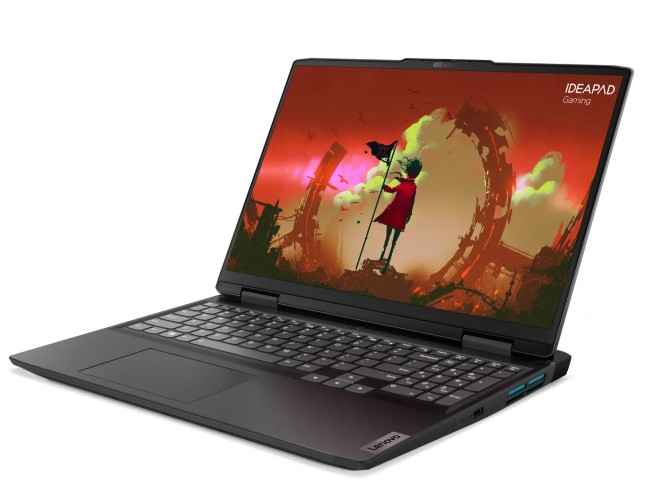
Sony WH-XB910N Wireless Headphones launched in India with Active Noise Cancelation: Price and Specs https://www.digit.in vasan.gs@9dot9.in (G. S. Vasan) Although originally launched in the fall of last year, Sony WH-XB910N (review) is finally here in India. This pair of Sony wireless headphones come with Active Noise Cancelation (ANC), LDAC codec support, and up to 30 hours between charges. They pack a 40mm driver for Extra Bass and you can enjoy two simultaneous connections over Bluetooth 5.2 network. Sony WH-XB910N Specs and Features Sony WH-XB910N is armed with 40mm dynamic drivers that claim to create an “exceptional bass”. This works over Bluetooth 5.2 and is compatible with Android and iOS phones among other platforms. However, a notable difference is that Android phones get a leg up in terms of their support for Sony’s proprietary LDAC codec. This enables hi-res audio conversion. Meanwhile, iOS devices will support up to AAC codec. Now, you can configure the codec on the Headphones Connect app available on both Android and iOS. With this app, you can control touch inputs, do firmware updates, fiddle around with the equalizer knobs, set up Sony's 360 Reality Audio, etc. Another big feature of these cans is the presence of ANC thanks to Dual Noise Sensor technology. The company states the headset can drive up to 30 hours of runtime with ANC on. To top it up full, it would take 3.5 hours using USB-C fast charging. Sony says you can get 4.5 hours of juice in just 10 minutes of charge. You can also check the battery percentage within the aforementioned application. Among other things, you also get an Ambient sound mode, 3.5mm audio jack, two microphones for calls, Digital Sound Enhancement Engine (DSEE), support for Alexa and Google Assistant, Fast Pair, Swift Pair, Bluetooth multipoint (Seamless switching between up to two simultaneous connections), foldable design, and a carry case. The headphones weigh around 252 grams. Sony WH-XB910N Price and Availability The Sony WH-XB910N comes at a price tag of ₹14,990 in India and will be retailing through Sony's website and other leading online as well as offline stores. For other news, features, buying guides, reviews, and everything else tech-related, keep reading Digit.in. https://ift.tt/2NUjadu February 28, 2022 at 01:32PM
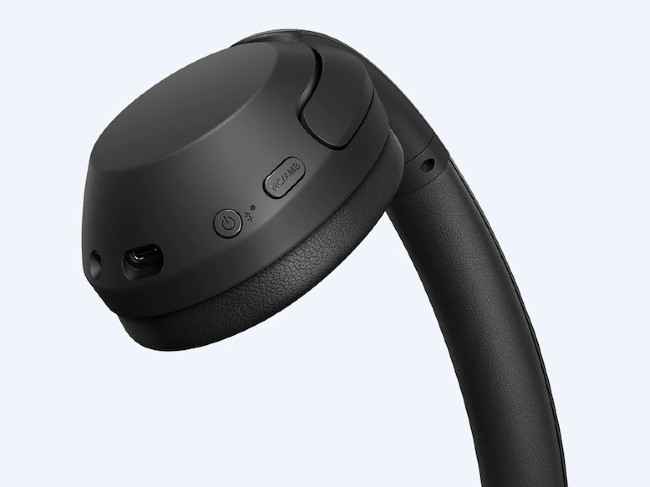
Xbox Game Pass March 2022 List: Games Coming And Leaving https://www.digit.in yetnesh.dubey@9dot9.in (Yetnesh Dubey) The Xbox Game Pass March 2022 list is officially out and here are the games coming and leaving the platform. First up, joining the Xbox gaming subscription service is Alice Madness Returns on EA Play for PC, in addition to the action-adventure title FAR: Changing Tides, which follows the journey of a boy and his trusted ship as he embarks on a quest of voyaging home. The next title joining the Xbox Game Pass for March is A Memoir Blue, which takes the player on to a journey of the sweet journey of a devotee mother and her champion daughter. Next up is Crusader Kings 3, a massively popular RTS game enabling players to conquer their way through various Kingdoms across the Middle Ages. The Weird West is another brand new addition launching day 1 on Xbox Game Pass in March 2022. Developed by Devolver Digital, the Weird West is an action-adventure RPG set in an alternate western timeline. Last but not the least, Shredder is also joining the Xbox Game Pass sometime in March 2022, and it's bringing all the high-octane snowboarding action with it. Leaving the Xbox GamePass this March are HypnoSpace Outlaw, Killer Queen Black, Stealth Inc 2: A Game of Clones, and Touhou Luna Nights. Additionally, Titanfall, an EA Play title, is also leaving the Xbox Game Pass this month because EA is delisting the shooter from its digital storefront. So far, the new additions to the Xbox Game Pass look very promising and are sure to add a ton of value to the existing library of the subscription. https://ift.tt/AtNIhxM February 28, 2022 at 01:01PM

Sunday, 27 February 2022
Asus 8z launched in India with Snapdragon 888 5G SoC, 120Hz display, and a 64MP dual rear camera setup https://www.digit.in vasan.gs@9dot9.in (G. S. Vasan) Asus took its sweet time but has finally launched the Asus 8z in India. Since it has had debuted in the global markets under the Zenfone 8 moniker for a while now, you may already have a fair idea regarding its specs and features. It brings a Snapdragon 888 Soc, 5G, 120Hz FHD+ OLED screen, a 64MP+12MP ultrawide camera duo on the back, and a 4000mAh battery, among other things. Now, what you may be eager to know about its pricing and where to buy it. Asus 8z India Price and Availability The company has priced the Asus 8z at ₹42,999 for the 8+128GB variant in India. The sale begins from March 7 at 12 PM on Flipkart.com. You can grab it in Silver and Black colour options. Asus 8z Specs and Features Asus 8z sports a 5.9” AMOLED screen with FHD+ resolution, HDR10+ support, 120Hz refresh rate, 240Hz touch sampling rate, up to 1100 nits brightness, 112% DCI-P3 color coverage, and Gorilla Glass Victus protection. The front camera is a 12MP sensor lying within a punch-hole cutout. The back cameras include a 64MP (with OIS) and a 12MP 112° ultrawide snapper. The Asus 8z comes with Android 11 software on top of a Snapdragon 888 5G chipset, up to 16GB LPDDR5 RAM + 256GB (UFS 3.1) storage, and a 4000mAh battery with 30W charging support. Other miscellaneous features in the phone are IP68 water resistance, a 3.5mm headphone jack, USB-C 2.0, Stereo speakers, Triple Mics, an In-display fingerprint reader, WiFi 6E, Bluetooth 5.2, NavIC (L5), and NFC. For more news, buying guides, feature stories, reviews, and everything else tech-related, keep reading Digit.in. https://ift.tt/uLV1HPW February 28, 2022 at 12:28PM

Samsung Galaxy Book 2 Pro, Pro 360 laptops debut with Intel 12th gen CPUs, OLED displays, and S-pen: MWC 2022 https://www.digit.in vasan.gs@9dot9.in (G. S. Vasan) At MWC 2022, Samsung has unveiled the Galaxy Book 2 Pro and Galaxy Book 2 Pro 360. Both laptops come with 13.3-inch and 15.6-inch AMOLED displays with 1080p webcams up top and support for S-pen input. They are running on Intel 12th-gen processors along with Intel EVO certification which entails features such as instant wake up, fast charging, FHD screens, good battery life, and performance. So, let’s unpack what the new machines bring to the table. Samsung Galaxy Book 2 Pro Specs and Features The 13.3-inch and 15.6-inch models of the Samsung Galaxy Book 2 Pro come in at 0.87 grams and 1.11 grams (internal graphics model) respectively. Those screens are AMOLED in nature with 1080p resolution and an FHD webcam on the top. Inside, it is sporting Windows 11 laid on top of Intel’s 12th Gen Intel Core Processors (i7/i5) along with Intel EVO perks. While the graphics options are either Iris Xe internal GPU or Intel’s Arc external GPU. This is coupled with 8/16/32GB LPDDR5 RAM and Up to 1TB NVMe SSD storage. The battery size also differs as in 63W for the 13.3” model and 68W for the 15.6” one. The supplied charger support is 68 watts Type-C adapter. The differences also extend to the connectivity and audio side of things. The 13.3-inch variant comes equipped with dual-band WiFi 6E, Bluetooth 5.1, 1x Thunderbolt 4, 1x USB-C, 1x USB 3.2, 1x HDMI, 3.5mm headphone jack, and MicroSD Slot. Meanwhile, the 15.6-inch model has 5G through an optional SIM slot on top of these I/O options. The speakers on the 13.3-inch unit is a 2x 4W setup while the 15.6-inch variant has a 2x 5W setup. The keyboard on the 15.6-inch machine has a numeric keypad while the other one doesn’t. Among other things, the laptops also have a Fingerprint on Power Key and Dual Array Mic. The colour options are Silver and Graphite. Samsung Galaxy Book 2 Pro 360 Specs and Features The Galaxy Book 2 Pro 360 13.3-inch model weighs 1.04kg while the 15.6-inch model is slightly heavier at 1.41kg. Samsung has detailed more about the display. That is both the models are of sAMOLED kind with FHD resolution, 16:9 ratio aspect ratio, up to 500nit (HDR), 120% of DCI-P3 color gamut, and 1,000,000:1 contrast ratio. The laptops are powered by Intel’s 12th-gen i7/i5 chips but with just the Iris Xe iGPU option only. You get more storage options in the way of 256GB, 512GB, and 1TB SSDs. Rest, the RAM, connectivity solutions, audio setup, battery, and charging support are all the same as the Galaxy Book 2 Pro. It also comes in a Burgundy option too. Price and Availability The i7+8GB+256GB model of the Galaxy Book 2 Pro will be available from April starting at $1,050 (~₹78,840). The Galaxy Book 2 Pro 360, meanwhile, starts at $1,249.99 (~₹93,857). The pre-booking begins on March 18. For more news, features, buying guides, reviews, and everything else tech-related, keep reading Digit.in. https://ift.tt/PScrfCl February 28, 2022 at 09:22AM
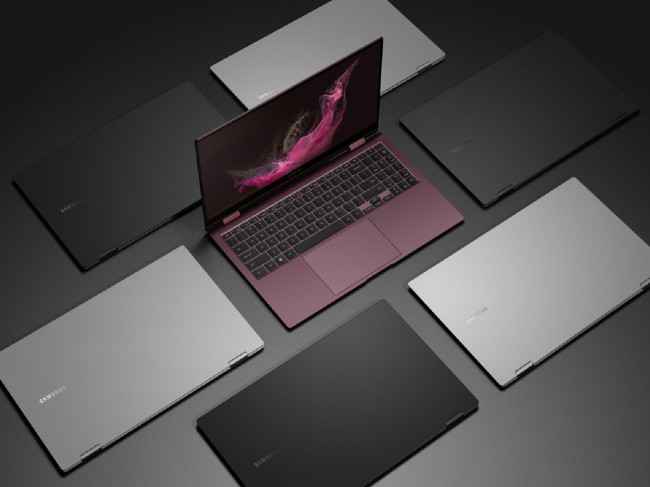
Travel Photography Settings: A Practical Guide
The post Travel Photography Settings: A Practical Guide appeared first on Digital Photography School. It was authored by Jeremy Flint.

Looking for the best travel photography settings? You’ve come to the right place.
In this guide, I take you through the settings you need to capture stunning travel photos, including:
- The travel camera mode that I highly recommend
- The best aperture, shutter speed, and ISO for travel photography
- How to set up your camera for beautiful shots of church cathedrals and other interiors
- Much more!
Of course, there is no single list of perfect settings for travel photography; it depends on the situation. That’s why, at the end of the article, I detail a few specific scenarios, and I share my approach (including the exact settings I use for each one).
So whether you are looking to head out on your first travel photography adventure or you’re an intermediate-level photographer hoping to really explore more advanced settings for different scenarios, this guide is for you.
Let’s dive right in.
The best settings for travel photography: getting started
While modern cameras offer a huge array of settings, you only need to understand a few specific items to achieve beautiful travel shots: camera mode, aperture, shutter speed, and ISO.
So in this section, I offer practical guidelines for adjusting each of these settings (based on years of experience as a professional travel shooter).
The best camera mode for travel photography
Travel photography settings starts by picking a camera mode. These modes determine which specific camera settings you control – and which settings are chosen by your camera.
Now, most cameras offer basic modes, such as “Auto,” “People,” “Landscape,” and “Macro,” but I recommend you avoid these. While they make travel photography very easy – just point and click! – they’re not especially intelligent. They don’t know what you’re shooting, and so they won’t get you consistently great results.
Instead, look to your camera’s other modes, such as Aperture Priority mode, Shutter Priority mode, and even Manual mode.
These modes are where the power is at; they let you carefully specify key settings, such as aperture and shutter speed (more on these in a moment!).
Aperture Priority mode, for instance, lets you choose an aperture and ISO while your camera selects a shutter speed (with the goal of getting a bright, well-exposed image).
Shutter Priority mode, on the other hand, lets you choose the shutter speed and ISO, while your camera selects an aperture.
And then there’s Manual mode, which gives you complete control over all settings and tells your camera to let you do all the hard work.
Personally, I’m a fan of Aperture Priority mode. It offers plenty of control, but it also makes selecting the right settings quicker. You simply dial in an aperture and an ISO, your camera picks a shutter speed, and you can start capturing some beautiful travel shots.
The best aperture for travel photography
Aperture refers to the opening in your camera lens, which widens and narrows to let in more or less light, respectively.
Note that different aperture sizes are referred to using f-stops, where a low f-stop (such as f/1.4) corresponds to a wide aperture, and a high f-stop (such as f/22) corresponds to a narrow aperture.
What does an aperture do? For one, it adjusts image brightness (i.e., exposure). Wider apertures let in more light, which in turn creates a brighter image (so if you’re shooting when the light is low, you can widen your aperture to brighten up your shots).
Second, the aperture adjusts the depth of field, which refers to the amount of your image that appears sharp. A wide aperture will create a very small window of focus, while a narrow aperture will keep the entire shot sharp from foreground to background.

The best aperture for travel photography depends on your intentions. If you’re doing travel portraits or detail shots, a wide aperture – such as f/2.8 – is ideal, as it will create a beautiful blurred background effect. This, in turn, will show off your subject.
But if your goal is to create landscape-style images that emphasize every little detail, from grass in the foreground to mountains in the background, a narrow aperture – such as f/11 – is the better choice.
Personally, I tend to shoot at around f/8 to f/22, as it lets me show plenty of stunning details when capturing landscapes and cityscape scenes. But it’s a good idea to vary your aperture depending on the scene, the subject, and personal preference.
The best shutter speed for travel photography
The shutter speed is the length of time your camera shutter stays open – in other words, the length of time you are actually taking a photo.
Longer shutter speeds let in more light, which is helpful when shooting at night and during sunrise and sunset. But lengthy shutter speeds also produce image blur. To shoot photos at a shutter speed below 1/60s or so, you’ll need a tripod; otherwise, you’ll end up with soft, unusable images.
So what shutter speed is best for travel photography? If you’re shooting in bright light, you can easily keep your shutter speed above 1/200s or so, which will keep your photos sharp (even if they feature moving people).
However, once the light starts to lower, you’ll either need to lower your shutter speed or raise your ISO to keep your exposures nice and bright. If you have a tripod handy, then dropping your shutter speed is fine – and it’ll even help you create beautiful long-exposure landscape photos like this one:

The best ISO for travel photography
ISO refers to your camera’s sensitivity to light.
The higher the ISO, the more sensitive your camera becomes, and the brighter the resulting image.
Unfortunately, high ISOs also produce noise, which looks bad and will quickly ruin image quality.
So what do you do?
When the light is good, or you’re working with a tripod, keep your ISO as low as you can (around ISO 100). That way, you get the best-quality travel images.
But when the light drops, if you’re shooting handheld, raise the ISO as much as necessary (and never more). Boosting the ISO will keep your shots well exposed even if you use a fast shutter speed, so when working handheld in low light, it’s a sacrifice you have to make – just don’t push it any farther than you need to.
Advanced travel photography settings
Once you’ve mastered your basic settings, think about how you might respond in particular situations. For instance, if you’re photographing a beautiful mountain sunrise, what settings should you use? What if you take street shots around noon? What if you head inside a cathedral?
In this section, I take a deep dive into the best travel settings to use when faced with different shooting scenarios.
Scenario 1: Landscapes at sunrise and sunset

Sunrise and sunsets offer an incredible opportunity to capture the landscape bathed in glorious light. But you have to choose your settings very quickly; otherwise, the beauty will pass and you’ll miss your chance. Here are the settings I like to use in such travel landscape situations:
- Camera mode: Aperture Priority
- Aperture: For landscapes, I will generally select an aperture of around f/8 as my goal is to keep the entire scene sharp. However, if I’m looking to focus on a particular subject and blur the background or foreground, I’ll widen my aperture to f/4 or f/5.6.
- Shutter speed: When working in Aperture Priority mode, the camera will select the corresponding shutter speed; as I’m working on a tripod, I simply go with whatever the camera gives me.
- ISO: 100. By keeping the ISO low, I prevent the image from becoming noisy.
Scenario 2: Sunny midday street shots

When photographing travel street scenes during the day, you’ll often have lots of good light – but you need to be ready in case your subject moves into the shade or clouds block out the sun.
I recommend the following settings:
- Camera mode: Aperture Priority. This allows me to respond quickly to changes in the light (as my camera will adjust the shutter speed automatically!).
- Aperture: Around f/8. My goal is to keep the subject and the surrounding environment in focus, so I select a narrow aperture for a deep depth of field.
- Shutter speed: 1/60s is a good starting shutter speed. However, if your subject is moving or you’re using a long lens, you’ll want to increase this (often to around 1/250s or more).
- ISO: I start at ISO 100, but if I need a faster shutter speed (i.e., if the camera has dropped the shutter below 1/60s or I’m photographing moving subjects), I’ll increase it as required.
Scenario 3: Cathedral interior

Church or cathedral interiors are often dimly lit, so you’ll need to take certain steps to keep your shots sharp. My best advice is to mount your camera on a tripod, though if that’s not an option, then be sure to use a camera and/or lens with powerful in-built image stabilization.
I generally select my settings as follows:
- Camera mode: Aperture Priority. (Sensing a pattern? I really like Aperture Priority!)
- Aperture: Around f/8; I want to keep the entire shot in focus, including the floor, walls, and ceiling.
- Shutter speed: Around 1/60s or more to prevent blur due to camera shake. However, I may drop this when using a tripod.
- ISO: ISO 400. While you should always try to keep your ISO to a minimum, you’ll generally need to increase it when shooting indoors, especially if you’re handholding your shots.
Scenario 4: Animal in the wild

When traveling, you may have opportunities to capture the local wildlife (and potentially at very close range). Wildlife photography is very different from standard travel photography – you’ll need to work quickly and keep your finger on the shutter button. I also recommend using your camera’s burst mode; that way, you’ll be able to nail any split-second opportunities that may appear.
Here are my recommended settings:
- Camera mode: Aperture Priority. This mode is especially critical when shooting wildlife. If you spend too much time fiddling around with manual settings, you’ll often miss the shot.
- Aperture: f/5.6 – f/8. It’s important to keep the entire animal in focus, so I try to avoid widening my aperture past f/5.6 or so.
- Shutter speed: 1/200s or more. Animals often move fast, and you need a fast shutter speed to freeze that motion!
- ISO: 100-200, though don’t be afraid to raise it as the light drops.
Travel photography settings: final words
Now that you’ve finished this article, you’re ready to head out and tackle some travel photos of your own.
Just remember: The best travel settings suggested here are meant as a general guide and can vary depending on what you are shooting. If you feel a setting doesn’t work for you, that’s okay! Over time, you may even find that you prefer different settings when doing travel photography.
Now over to you:
Where do you plan to travel next? What type of travel subjects do you plan to shoot? Share your thoughts in the comments below!
The post Travel Photography Settings: A Practical Guide appeared first on Digital Photography School. It was authored by Jeremy Flint.
from Digital Photography School https://ift.tt/v8OYtuh
Saturday, 26 February 2022
Still Life Photography: 5 Tips to Level Up Your Shots
The post Still Life Photography: 5 Tips to Level Up Your Shots appeared first on Digital Photography School. It was authored by Lea Hawkins.

Want to capture stunning still life photography?
In this article, I offer five easy ways to improve your still life images. I cover all the key elements (including lighting, composition, and editing) – so that, no matter your camera gear, you’ll be ready to shoot some amazing still life shots of your own.
Let’s get started.
1. Pick items that interest you
Still life photography starts with subject choice…
…but in truth, there are no “best” still life subjects. Ideal subjects are simply items that interest you, and they can come from anywhere, including:
- Around your house
- Flea markets and thrift stores
- Estate sales
- The grocery store
- The florist
Of course, the words “still life” generally conjure up visions of vases of flowers, pears on candlelit tables, old paper, and violins. And you can certainly capture beautiful still life shots by obtaining and arranging these “classical” items.
But you don’t need to spend time pursuing such images if they don’t interest you. Instead, ask yourself: What is meaningful to me? What objects do I love? Is there a story I would like to tell with my still life?
Alternatively, you might look for items that simply catch your eye. This next shot contains a piece of dried seaweed on some calico. Was the seaweed meaningful to me? Not really. Did it tell a story? Nope. It simply looked beautiful, so I wanted to capture it!

Finally, you can capture “found” still life arrangements – that is, still life arrangements that already exist (in houses, backyards, or on the street). Here’s a found still life, taken of a friend’s bedside table:

When picking still life subjects, here’s my final piece of advice:
If you’re stuck, just find some items that are personal and important to you, such as:
- Family heirlooms
- Pictures containing relatives
- Books that you love
Then, after a bit of arranging, you’ll capture a still life that’s loaded with meaning!
2. Carefully select a background
The background can make – or break- your still life. If you want great results, you must choose your background with great care.
Specifically, don’t choose a background that features distracting elements. Avoid eye-catching colors that draw the eye, and if you use fabric, make sure you iron it first (few things are more distracting than a wrinkled backdrop!).
Instead, keep it simple. Fabric, cardboard, and existing walls often work great, provided that they’re relatively plain. The goal is to emphasize your still life subjects (so the viewer knows exactly where to look).
Here’s an image featuring a plain backdrop made from a couple of old potato sacks:

And here’s another shot, this time featuring a sheet of red fabric:

Also, experimentation is important! Different background textures and colors can complement your subjects in different ways, so it pays to test out a few options before deciding on a final arrangement. You may be surprised by the backdrops that make your still life really pop.

And you might even try experimenting with focus and depth of field. For instance, create a shallow depth of field effect, where you keep the front element sharp and the background blurry. Then try the opposite: Use a narrow aperture to keep the still life items and the background tack-sharp. See which you prefer!
3. Get creative with still life lighting
Light is an essential component of still life photography, and many still lifes feature beautiful lighting arrangements (which often create moody, painterly effects).
But it’s important to realize that you don’t need fancy lighting to create a stunning still life. When you’re starting out, I recommend using whatever light you have available, such as:
- Indirect light from a window
- A lamp
- A flashlight
- A candle
Don’t just create your setup, take one shot, and call it a day. Instead, try out different lighting effects! Use a curtain to block out some window light, then remove the curtain to let the light stream in. Shine a flashlight at your main subject, then try a second shot where the flashlight is positioned off to the side and shrouds your subjects in shadow. Make sense?
Note that, if you’re using lamps, flashlights, or candles, you will definitely need a tripod; indoor lighting won’t get you a fast-enough shutter speed for handheld shots. (This can be a relatively cheap model; as long as it’s positioned on a sturdy surface, it should be able to keep your camera steady.) When you’re ready to shoot, just mount your camera to the tripod, activate the two-second self-timer, and start taking images.
By the way, a fun technique that works great for still lifes is called light painting. Simply set up your camera to capture a long exposure (in the area of 10 to 30 seconds), press the shutter button, and paint light – from a flashlight or candle – around your subject. You’ll end up with some very cool effects, as you can see in the examples below:

Once you get more serious, you can try lighting your still life arrangements with speedlights (though I recommend you modify any speedlight with a softbox to prevent hard shadows).
Whatever lighting you choose, make sure you spend plenty of time thinking about its position. Light that comes from the front will look very different than light that comes from behind your subject or off to the side, so you’ll need to carefully adjust your lights to get the effect you’re after. I’d recommend you start with sidelighting, as this often creates a beautiful, three-dimensional effect (and it’s what I used when capturing the three example photos featured above).
4. Try plenty of compositions
Learning to compose still life photos is often a struggle for beginners. This is understandable, as still life composition brings up a ton of questions, such as: Where should I place all my items? Should they overlap? Should they be close to the background? What camera angle should I use?
Fortunately, still life composition isn’t as hard as it might seem. I have two main recommendations, and they will take you far:
First, if you’ve not encountered them before, read about the rule of thirds and the rule of odds. These will offer a fantastic compositional starting point for beautiful still life shots, plus they’re really easy to use.
Second, just keep moving your items around.
This latter recommendation might seem a bit silly, but I promise: If you rearrange your objects enough, you’ll eventually hit on an arrangement that looks great. Don’t just settle for the first composition that you try – instead, test an arrangement, then evaluate it critically. Determine what you like and dislike about it, then make adjustments.
As you create different compositions, here are a few items to keep an eye on:
- Overly empty gaps (you generally want to keep the entire arrangement balanced!)
- Busy areas (you don’t want to confuse the viewer with too much activity)
- Movement between objects (aim to lead the eye from one object to the next)
Remember: A tiny tweak can make a huge difference. So if an arrangement doesn’t seem perfect, make a few changes. Chances are that you’ll soon hit upon a better setup!
And try photographing from different angles. Shoot from standing height, then raise your camera higher or take it down low. Walk to one side of the setup and capture a profile shot. You can even test out different lenses! Each experiment might turn out great or it might look bad – but you won’t know until you try.
5. Make sure you spend time editing your still life photography
Post-processing can make a huge difference to your still life photos, so I highly recommend you spend time editing your images in Lightroom, Photoshop, Capture One, or some other program.
Start out with basic adjustments, such as white balance, exposure, contrast, and saturation. Then, as you become more experienced, play around with more advanced options.
Consider doing HDR photography, where you take several images at different exposure levels then blend them together in Lightroom. Or use Photoshop to add a beautiful texture to your image for a painterly look:

Still life photography: final words
Still life is a beautiful, compelling, intimate genre of photography.
So experiment with lighting, composition, and editing. Have fun! Enjoy yourself!
You’re bound to end up with some stunning photos.
Now over to you:
What type of still life photos do you plan to take? Which of these tips are your favorites? Share your thoughts in the comments below!
The post Still Life Photography: 5 Tips to Level Up Your Shots appeared first on Digital Photography School. It was authored by Lea Hawkins.
from Digital Photography School https://ift.tt/YlrdSLu
Friday, 25 February 2022
dPS Weekly Photography Challenge – Patterns in Nature
The post dPS Weekly Photography Challenge – Patterns in Nature appeared first on Digital Photography School. It was authored by Sime.
Happy Weekend to you, friends! I’m running a little late this week, but couldn’t let you down with no challenge to partake in! Please excuse my brevity.
#dPSPatternsInNature is your challenge
The challenge this week comes from Carol over in the Facebook Group “Patterns in nature or Patterns in things” So you can opt for either, I opted for ‘Patterns in Nature” (Can anyone name where my photo was taken?)

Remember to add the tag #dPSWeeklyChallenge and #dPSPatternsInNature if you’re posting on social media, but otherwise, feel free to drop your photograph for the theme in the comments below!
Encourage each other, be kind.
Have a great week, see you next Saturday morning.
Submit your challenge theme ideas here.
Join our private Facebook group here.
The post dPS Weekly Photography Challenge – Patterns in Nature appeared first on Digital Photography School. It was authored by Sime.
from Digital Photography School https://ift.tt/NkfFV6y
Samsung Galaxy A03 launched in India with a Unisoc T606 processor and 48MP rear camera setup https://www.digit.in vasan.gs@9dot9.in (G. S. Vasan) Samsung has added a new smartphone to its entry-level portfolio named Galaxy A03. This also marks the company’s first Galaxy A-series offering this year. This newbie slots in at the 10-12K price segment and packs Unisoc silicon, a 6.5-inch HD+ screen, a 48MP duo at the backside, and a 5000mAh power source inside. Let’s start off with the cost and release details. Samsung Galaxy A03 India Price and Availability You can buy the Galaxy A03 in Black, Blue, and Red colors through Samsung.com, major online platforms, and offline stores. The price is set at ₹10,499 for the 3+32GB model and ₹11,999 for the 4+64GB unit. Samsung Galaxy A03 Specs and Features Samsung has employed a 720p screen on the front that extends 6.5-inches diagonally. It’s a TFT panel and has got an Infinity V cutout at the top. This indent is home to a 5MP camera for selfies and video calls. You get a 48MP+2MP dual camera arrangement by the back. This is housed in a square camera hump. The processing is attributed to a Unisoc T606 SoC that’s aided by up to 4GB RAM and 64GB of storage. There is a 5000mAh battery also in the inner chamber. This can be charged through the phone’s micro-USB port. The software version it ships with is Android 11 and the skin is OneUI 3.1 Core. Other things to note are up to 1TB microSD expansion, 3.5mm headphone jack, Dolby Atmos equalizer, WiFi, Bluetooth 5.0. That’s the long and short of it. For more such news, reviews, buying guides, feature stories, and everything else tech-related, keep reading Digit.in. https://ift.tt/DyuoNPM February 25, 2022 at 07:57PM
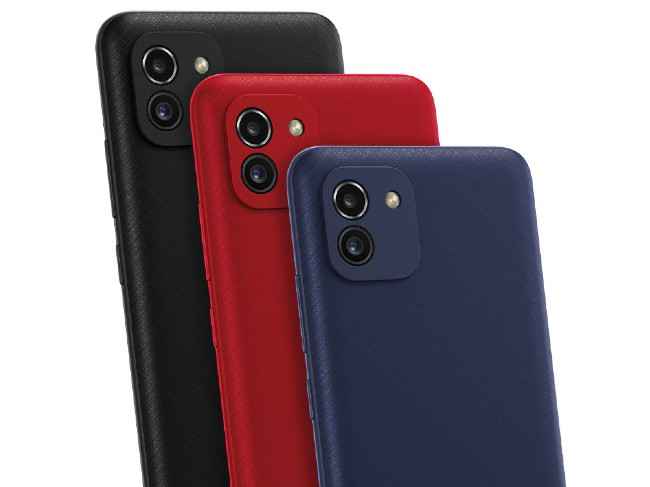
Asus 8z confirmed to launch in India on February 28: Expected specs and features https://www.digit.in vasan.gs@9dot9.in (G. S. Vasan) Finally, after months of waiting, the Asus Zenfone 8 will be setting foot in India as the Asus 8Z. Now, even though you may be well aware of this delayed launch and the phone’s anatomy, let’s jog our memory. For starters, the key items in the repertoire are likely a 120Hz FHD+ screen, a 64MP (OIS) plus 12MP ultrawide sensor setup at the back, a 4000 milliamp battery, and possibly multiple memory variants. The launch announcement through the Asus 8Z Twitter handle says, “Your wait for the perfect phone is over! We're bringing you unparalleled performance into a compact sleek body. Catch India's ironman @milindrunning talk about the #asus8z at its launch on 28th Feb, 12pm.” Here’s what you can expect from this forthcoming Asus handset: Asus 8Z Specs and Features (Expected) Asus 8Z could come with a 5.9-inch FHD+ AMOLED HDR10+ ready display with 120Hz refresh rate, 240Hz touch sampling rate, up to 1100 nits brightness, 112% DCI-P3 Color Gamut support, and Corning Gorilla Glass Victus protection. Towards the left corner, there would be a punch-hole cutout housing a 12MP selfie clicker. The back cameras, by the way, could be a 64MP (OIS) and a 12MP 112° ultrawide shooter. Its innards might comprise of a Snapdragon 888 5G processor, a 4000mAh battery (with 30W charging support), and memory options going up to 16GB LPDDR5 RAM + 256GB (UFS 3.1) storage. Amidst various other treats, the phone could also include a 3.5mm audio jack, Stereo speakers, Triple Mics, IP68 Water and dust resistance, In-display fingerprint scanner, WiFi 6E, Bluetooth 5.2, NavIC (L5), USB-C, and NFC. Let’s see if these estimates turn out to be true and if it boots with Android 12 or 11. So, mark your calendars and till then, keep yourself updated with news, buying guides, feature stories, reviews, and everything else tech-related at Digit.in. https://ift.tt/ma4FzM9 February 25, 2022 at 07:55PM
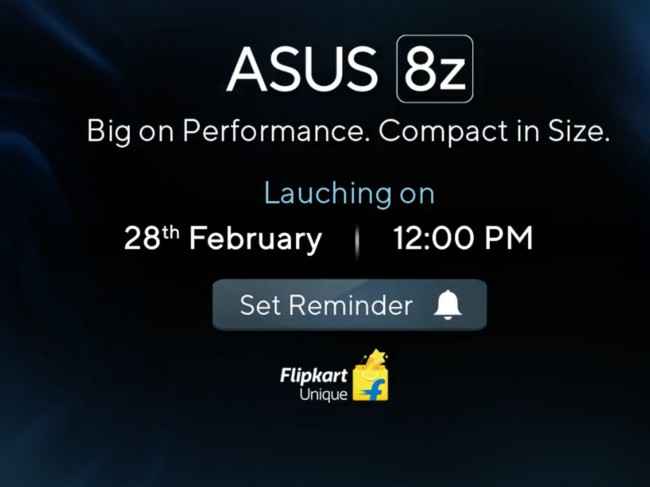
Redmi Note 11 Pro series launching in India on March 9: Heres what to expect https://www.digit.in vasan.gs@9dot9.in (G. S. Vasan) After the Redmi Note 11 and Note 11S launched in India earlier this month, the company is now going to break cover on the Redmi Note 11 Pro series in the country. Redmi Note 11 Pro and Redmi Note 11 Pro+ will be launched in India on March 9, 2022. The phones have got a microsite on Amazon, so we know where it will be available too. The two phones are teased to sport a 108MP camera, 67W fast charging, 120Hz high refresh rate and 5G capability. Let’s know everything they are likely to feature. Redmi Note 11 Pro series Specs and Features (Expected) Redmi Note 11 Pro phones are likely to flaunt a 6.67-inch FHD+ Super AMOLED screen with 120Hz refresh rate and Gorilla Glass 5 protection. It could have a 16MP selfie snapper. Meanwhile, at the back, as already confirmed, you will be getting a 108MP camera. The accompanying sensors might differ between the two models. Under the hood, the Pro edition may house an Helio G96 and Pro+ may feature a Dimensity 920 5G processor. The power source may also differ between the two, i.e., the Note 11 Pro Plus could come with a 5000mAh battery whereas the Pro could rely on a smaller 4500mAh cell. In China, the phones had shipped with Android 11 based MIUI 12.5 but that might not be the case in India. Let’s see. Speaking of that, the phones had released in the home market at the following prices: Redmi Note 11 Pro series Price and Availability (China) Redmi Note 11 Pro was launched at CNY 1799 (~₹21507) in China for the 6GB+128GB model. Meanwhile, the Redmi Note 11 Pro+ started at CNY 1999 (~₹23,898) for the 6+128GB variant. However, the Indian pricing may differ. We’ll know soon. Until then, stay tuned in to Digit.in for news, buying guides, feature stories, reviews and everything else tech-related. https://ift.tt/ZlHvrDb February 25, 2022 at 06:15PM
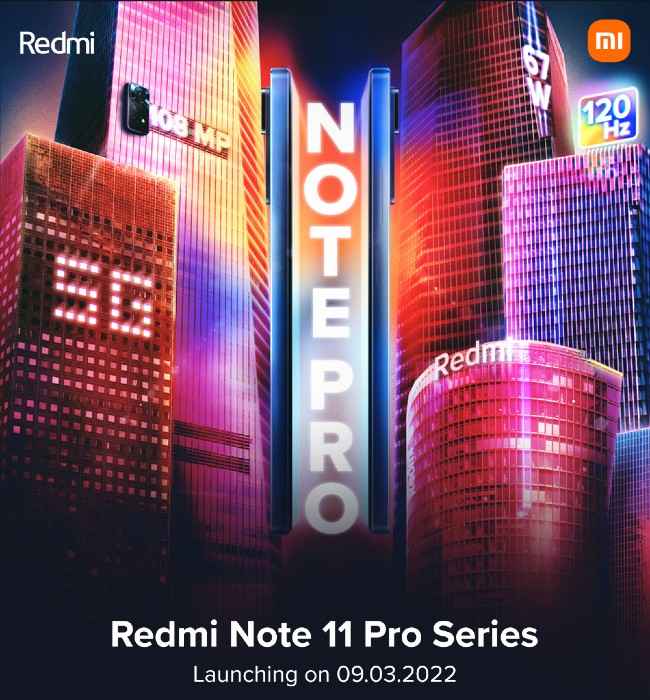
Canon EOS R5 C joins Canons Cinema EOS Systems lineup, price starting at Rs 3,99,990 https://www.digit.in aliakbar.merchant@9dot9.in (Ali Akbar Merchant) Canon recently announced a new camera that adds to their lineup of Cinema EOS Systems that not only boast excellent performance in the video department but also exceptional photography capabilities. Along with the Canon EOS R5 C, Canon also expands their lineup of L-series RF Prime lenses with the new RF800mm F5.6L IS USM and the RF1200mm F8L IS USM which are touted to be significantly lighter, weighing in at just a little over 3 kgs. Canon EOS R5 C specs As we already mentioned, the EOS R5 C is engineered to provide excellent performance when it comes to video and is exceptional for photography as well. Well, the question is, what makes it perform so well and what are the major selling points of this system. To start with, the camera is designed to be compact and lightweight, weighing just around 680-grams. It also has ergonomics that make it comfortable to hold for long durations in both photo and video modes. In terms of specifications, the Canon EOS R5C boasts a full-frame CMOS sensor featuring 45MP. The image processing duties are taken over by the DIGIC X processor. Those two together give the camera the ability to shoot video at a whopping 8K at 60 frames per second RAW. One thing to note though is that 8K at 60P is only possible with an external power supply, while anything lower than that like 8K at 30P at RAW as well don't have a need for an external power supply. Shooting at high resolutions and high frames can sometimes lead to overheating in cameras, especially compact ones, but the EOS R5 C features an internal cooling fan that keeps the camera between acceptable operating temperatures. Canon also puts its legendary focusing prowess to good use on the EOS R5 C, with the camera featuring the tried and tested Dual Pixel CMOS AF tech with Eye AF, Face AF and deep learning tech that improves when used more. You can also control the Auto Focus via the articulating touchscreen LCD. Canon EOS R5 C vs R5 While the new Canon EOS R5 C shares a major portion of its name with Canon’s other mirrorless camera, there are a few differences that make the two totally different beasts. One of the most notable differences is that the R5 C has a cooling fan which increases the thickness of the device when compared to the non “C” sibling. That accounts for the major visual difference between the two but there are internal changes as well where the R5 can one-up the R5 C and that is in the stabilisation department. The R5 features IBIS or In Body Image Stabilisation, which is not present on the R5 C. Canon EOS R5 C price in India The Canon EOS R5 C will be priced at Rs 3,99,990 (Body Only) in India. Basically, the Canon EOS R5 C is a proper hybrid camera. Unlike other cameras that are primarily photo-centric with controls and interfaces designed for photographers first, the R5 C is designed from the ground up to serve dual purposes and do justice to both. For example, it has a power dial that can toggle between the video and photo modes and that even gives you different interfaces dedicated to making life easier in that mode in essence giving you two supremely capable cameras in one body. Or as we like to call it, a true hybrid. https://ift.tt/ziKhvC8 February 25, 2022 at 03:37PM
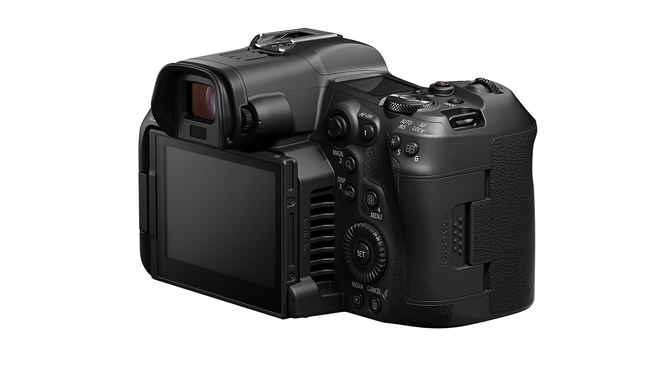
Thursday, 24 February 2022
Government suggests 5G rollout in India to take place by August 15, 2022: Report https://www.digit.in vasan.gs@9dot9.in (G. S. Vasan) 5G-equipped phones are here. People also have been waiting for 5G for a while now. But, if new reports are to be believed, things are picking up pace and even the Prime Minister’s Office (PMO) wants 5G to be here by August 15, 2022, i.e., this year’s Independence Day. Apparently, the Department of Telecommunications (DoT) has asked the Telecom Regulatory Authority of India (TRAI) to drop its recommendations on the reserve price and rules for the 5G allocation process. "Trai has indicated that they will send it (recommendations) by March. Thereafter, it will take us a month to make a decision around it," says Telecom Secretary K Rajaraman. 5G in India by 15 August: Know the details So, as already mentioned DoT wants recommendations from TRAI regarding the pricing and sale process of 5G. Once they have that, it is said to take 2 months to kick off the auction. At least that’s what Rajaraman predicts. The list of suggestions it has sought from TRAI also includes block size of spectrum and payments terms and conditions. TRAI does its due diligence and will pick the brains of all stakeholders of this whole 5G rollout like telecom operators. Anyways, once it does its part, the Digital Communications Commission (previously the Telecom Commission) will review the recommendations and then pass them to the cabinet for ultimate approval. “In reference to decisions/action points emanating from deliberations of a monitoring group, PMO has requested DoT to work towards the initial launch of 5G by August 15, 2022, and also explore the possibility of obtaining requisite recommendations from Trai before March 2022. In view of the above, Trai is requested to expedite the matter and provide the recommendations at the earliest,” remarked DoT in a letter to TRAI. So, PM Modi’s office wants 5G to be up and running by August 15, 2022. So, the clock is ticking. Also, the DoT has revealed that the 900MHz, as well as 800MHz and 1800MHz, are now available for auction. So, let’s see if things stay on track and how it all work out. We shall keep you posted. For more news, buying guides, feature stories, reviews, and everything else tech-related, keep reading Digit.in. https://ift.tt/nVY50um February 25, 2022 at 12:42PM

Realme Narzo 50 launched in India with MediaTek Helio G96, Android 12, and 120Hz display https://www.digit.in vasan.gs@9dot9.in (G. S. Vasan) After the Narzo 50A and Narzo 50i, Realme has released the standard Narzo 50 smartphone in India. The phone has been extolled with the “Performance Boosted” slogan. And this power is offered by a MediaTek Helio G96 chipset. From the teasers, we also knew that the underlying battery size would be 5000mAh and that it would flaunt a 120Hz screen. So, now that the phone is here, let’s take a look at its complete offering. Realme Narzo 50 Specs and Features Realme Narzo 50 has got a 6.6-inch 120Hz display. You can unlock the device using your face or the side-mounted fingerprint scanner. Inside, there is Android 12 based Realme UI 3.0 laid on top of MediaTek Helio G96 silicon. The phone comes in up to LPDDR4x RAM and internal storage. The phone keeps ticking thanks to a 5000mAh power cell that’s supported by 33W fast charging. The camera department consists of a 16MP sensor on the front and a 50MP+2MP+2MP troika at the back. As for how much it costs and where it retails, refer to the following section. Realme Narzo 50 Price and Availability You can buy the Narzo 50 in Black and Blue colours from Realme.com, Amazon.in and stores near you. The 4+64GB model is priced at an introductory offer of ₹12,999 and the 6+128GB variant would be available at a launch price of ₹15,499. The first sale is on March 3, 2022, at 12 noon. For similar news, feature stories, buying guides, reviews, and everything else tech-related, keep following Digit.in. https://ift.tt/P6dJVMR February 24, 2022 at 01:26PM
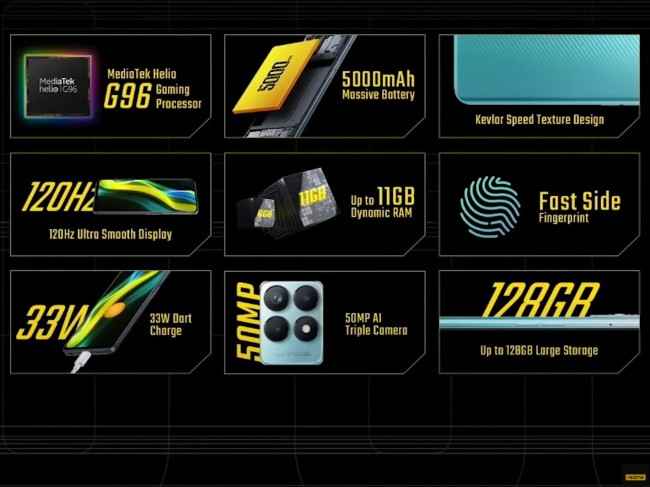
Samsung Galaxy A73, Galaxy A53, Galaxy A33, and Galaxy A23 specs leaked https://www.digit.in vasan.gs@9dot9.in (G. S. Vasan) Samsung’s mid-tier roster for the year will have a range of phones placed at various price points. The spate of phones would consist of alphanumeric names like Galaxy A73, Galaxy A53, Galaxy A33, and Galaxy A23. At least these are the phones whose details have leaked now. They come from a Twitter handle @Shadow_Leak via GSMArena. Let’s have a look. Samsung Galaxy A73, Galaxy A53, Galaxy A33, and Galaxy A23 specs (Expected) Samsung Galaxy A73 will reportedly have a 6.7-inch AMOLED display with FHD+ resolution and 120Hz refresh rate. Under the hood, the device could house a Snapdragon 750G alongside a 5,000 mAh battery with 25W fast charging support. The leak also tells the cameras would be a 108MP primary camera sensor, a 2MP depth sensor, a 12MP sensor, and an 8 MP sensor. Apparently, one of those would be ultrawide while the other handles the zooming up to a 2/3x distance. Secondly, we have the Galaxy A53, which is said to ship with a yet-to-release Exynos 1200 processor. This will be accompanied by a 5000mAh battery with 25W charging support inside. The screen on the surface is a 6.52-inch AMOLED screen with a 120Hz refresh rate and FHD+ resolution. The rear cameras are likely a 64MP main sensor, a 12MP superwide field of view, a 5 MP depth, and a 5MP macro module. Next, there is Galaxy A33 that flaunts a 6.4-inch FHD+ AMOLED screen with purportedly 60 Hz refresh rate only. Under the hood, the MediaTek Dimensity 720 chip is at work, taking power from a 5000mAh cell with 15W charging support. The camera department, meanwhile, is rumored to present a 48MP+ 8MP (ultrawide)+ 5MP (macro)+ 2MP (depth) sensor. The phone is however said to run on Android 11, which if true is discouragingly dated at this point. And lastly, Samsung will be using a 6.6-inch 1080p display with a 90Hz IPS LCD screen on the Galaxy A23. At the heart of it, the Dimensity 700 chip might power the device with help from a 5000mAh battery. The phone could come with 15W charging support. Other things in the mix may be a 50MP+ 8MP ultrawide+ 2MP macro+ 2MP depth quartet, and again Android 11. So, at the moment, we have got specs in bits and pieces only. We will inform you as soon as we have more details. So, keep reading Digit.in for this and other news, feature stories, buying guides, reviews, and everything else tech-related. https://ift.tt/i2rAHLv February 24, 2022 at 01:07PM
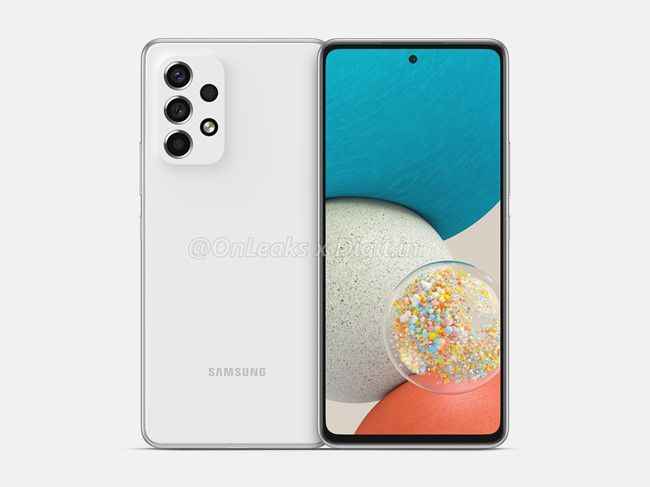
Wednesday, 23 February 2022
Google Pixel 7 Pro renders show off a similar Pixel 6 series look https://www.digit.in vasan.gs@9dot9.in (G. S. Vasan) Google is known to have difficulty in keeping its unreleased product details under wrap. So as is traditionally the case, the renders of its forthcoming flagship have already been leaked. The drop comes from OnLeaks via Smartprix.com and it strips down all there’s to see about the upcoming Pixel 7 Pro. The phone seems to be sharing a similar design language as its precursor. That means a slightly curved fascia with a central punch hole camera and a triple rear camera setup. Yes, it continues the visor-like appearance at the back, although the protrusion looks a bit flatter. Here’s everything we have learned about the device so far: Google Pixel 7 Pro Design, Specs, and Features (Expected) The Pixel 7 Pro will reportedly come with a 6.7 to 6.8-inch curved OLED screen on the front with a punch-hole cutout for the selfie camera. The bezels look rather slim. And even though this has rounded edges, the regular Pixel 7 could have a flat-screen like its antecedent. Coming to the backside, there, you get to see a familiar visor-like camera housing with three cameras (probably of the same kinds as before). Yes, it borrows the design cues from the Pixel 6 lineup but there seems to be a smattering difference if you look closer. That is here in this renders, the camera hump looks fading into the frame and it isn’t that jutting out either. One other tiny difference is the missing plastic strip housing the mmWave antenna which it looks like is being switched with a mmWave window flanking by the side frame. Rest, it is said to have a USB-C port, dual stereo speaker setup, a SIM card tray, and physical dimensions of 163×76.6×8.7mm. That’s all for now. We will keep you posted on the new updates about Google’s Pixel 7 lineup. So, stay tuned. And for more news, feature stories, buying guides, reviews, and everything else tech-related, keep reading Digit.in. https://ift.tt/P6TMgwK February 24, 2022 at 10:33AM
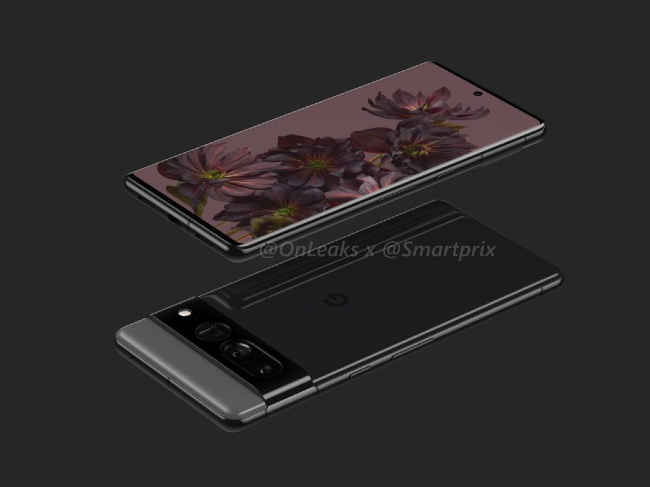
Intel launches 12th Gen Intel Core P-series and U-series mobile processors for thin and light laptops https://www.digit.in vasan.gs@9dot9.in (G. S. Vasan) After showcasing them at CES 2022, Intel is finally launching its 12th gen Alder Lake mobile processors from both P-series and U-series. These boast to bring “Enthusiast-level performance” to thin and light laptops. Although the top-of-the-line performers are the H-series with 45W TDP, the P-series with 28W power limit and U-series with up to 15W thermal headroom come wielding the scalable benefits of Intel’s new hybrid heterogeneous architecture. This means these CPUs have both performance cores and efficiency cores at play. Not only that, they bear new features like Thermal Director and improved EVO testing standards. This certification label implies support for an instant wake, fast charging, a healthy suite of connectivity options, compact form factor, FHD displays, and FHD at 30 FPS webcams, besides high-end performance and battery life. Let’s take a look at the specification and speeds of these chips: Intel 12th Gen P-series and U-series Specs To reiterate, the P-series caters to performance-centric thin and light laptops and there are 6 CPUs in this lineup including Core i7-1280P, Core i7-1270P, Core i7-1260P, Core i5-1250P, Core i5-1240P, and Core i3-1220P. The leader of the pack, i.e., Core i7-1280P incorporates a total of 14 cores (6 Performance+ 8 Efficiency). There is 24MB of L3 cache and a max clock speed of 4.8GHz. The base power limit is 28W although it can go up to 64 watts. You can check out the other model specifics in the above table. Next up, is the U-series which is designed for lower-end thin and light devices. It comes in two sub-ranges — UP3 at 15W and UP4 at 9W. They also bear fewer cores and especially the performance-focused P-cores are limited to two on all U-series chips. You can check out the complete specs of the 15W tier above and the 9W SKU below. Now, all new Intel 12th gen CPUs feature platform side goodies like DDR5/LPDDR5 RAM, Thunderbolt 4, USB 3.2 Gen 2, AV1 codec, WiFi 6E, etc. And as already mentioned, there is support for 3rd gen EVO label requisites like at least a 1080p camera, Dynamic Background Noise Suppression, instant wakeup, fast charging, etc. Finally, here’s when you can expect new laptops running on these mobile processors: Intel 12th Gen P-series and U-series Availability Intel reveals there will be 20 new mobile processors in total from these two lineups and they will be driving more than 250 laptops from brands such as Acer, Asus, Dell, Fujitsu, HP, Lenovo, LG, MSI, NEC, and Samsung, among various others. They will be hitting the stores in March 2022. For more news, feature stories, buying guides, reviews, and everything tech-related, keep following Digit.in. https://ift.tt/8VCecuk February 23, 2022 at 10:26PM

Poco M4 Pro 4G confirmed to launch in India on February 28: Heres what to expect https://www.digit.in vasan.gs@9dot9.in (G. S. Vasan) Poco India has teased the launch day of Poco M4 Pro to be on February 28. Now as some of you may recall, this is the same day that the phone is debuting on the global market too. Also, don’t confuse this with the Poco M4 Pro 5G phone that launched in India last week. This titular model will be 4G only and is also rumoured to be a rebranded version of the Redmi Note 11S phone, also something that landed in the country recently. The device is rumoured to come with a MediaTek Helio G96, a 90Hz FHD+ AMOLED screen, a triple rear camera setup, and a 5000 milliamp battery. Here’s everything you can look forward to on the phone, at least as far as speculations go. Poco M4 Pro 4G Specs and Features (Expected) Poco M4 Pro 4G could sport a 6.4-inch AMOLED panel with a 90Hz refresh rate, 1080p resolution, and a punch-hole cutout in the middle. The sensor inside could be of 16-megapixels. The back cameras, meanwhile, could be a 64MP primary one, an 8MP super wide view sensor, and a 2MP token macro shooter. Under the hood, the device could be engined by a MediaTek Helio G96 bolstered by up to 8GB of RAM and 128GB of storage. The battery in charge could be a 5000mAh one backed by a 33W adapter. Other components in the mix may be a side-mounted fingerprint scanner, a USB-C port, and a dual stereo speaker setup. Now, even though there are major similarities between this and the Redmi Note 11S, you may notice there could be differences such as the cameras. The Note 11S cones with a 108MP quartet. However, nothing can be said for certain as these are just early guesstimates. We will find out the full details around the device’s specs, price, and availability on February 28 at 7 PM. So, you should tune in for the same. And for other news, feature stories, buying guides, reviews, and everything else tech-related, keep reading Digit.in. https://ift.tt/fPsEqIN February 23, 2022 at 06:30PM

Realme GT Neo 3 design and specs revealed in new renders https://www.digit.in vasan.gs@9dot9.in (G. S. Vasan) Leaks around Realme product for the year are in full swing. Earlier today, we shared a news on the Realme Pad Mini’s leaked renders and now, it is time for the forthcoming Realme GT Neo 3. Coming from the prolific leakster OnLeaks via Zollege.in, the 5K image renders of the phone reveals its backside view including a triple camera island with a 50MP ‘Matrix’ OIS sensor. The device dons a gorgeous green color on a presumably glass back. Come, let’s see what else is spilled in this new report. Realme GT Neo 3 Design, Specs and Features (Expected) Realme will reportedly be using a 6.7-inch FHD+ 120Hz AMOLED display with a punch hole cutout. The sensor on the front could be a 16-megapixel one. Rotate to the rear and there you may get a 50MP Sony IMX766 (with OIS), an 8MP ultrawide camera and a 2MP macro sensor. The chip in process might be Snapdragon 888 or Dimensity 8100. We are yet to gain stronger evidence on this. A recent posting on the TENAA website reveals its memory configurations to include up to 12GB RAM and 512GB of internal storage. Also, the device has been spotted with RMX3560 and RMX3562 model numbers and one of them will likely be tagged as Gaming Edition. So, that could be the reason why we see some discrepancies with the processor. Similarly, the battery sizes are speculated to be of 4500mAh as well as 5000mAh. Meanwhile, the offered charging support could be 65W. Let’s be patient and more details should be here in time ahead of launch. In the meantime, stay glued to Digit.in for similar news, buying guides, feature stories, reviews, and everything else tech-related. https://ift.tt/xI7AOG8 February 23, 2022 at 02:50PM

iQOO 9, iQOO 9 Pro, and iQOO 9 SE launched in India: Specifications, price, and availability https://www.digit.in vasan.gs@9dot9.in (G. S. Vasan) iQOO 9 lineup has finally landed in India and there are three phones namely the iQOO 9, iQOO 9 Pro, and iQOO 9 SE. The iQOO 9 Pro is the leader of the gang wielding top-of-the-line features like Snapdragon 8 Gen 1, a 50MP triple rear camera setup with Gimbal stabilization, 2K E5 AMOLED screen, and 120W fast charging support. But, the other two aren’t far behind either in terms of their hardware prowess. Having got that snapshot of what the devices have to offer, let’s know the pricing and where to buy them now. iQOO 9 Series India Price and Availability iQOO 9 Pro 5G pre-order will be starting from February 23 with ICICI bank discounts of up to ₹6000, exchange offers and a No-cost EMI option. The price is as follows: 12+256GB - ₹69,990 8+256GB - ₹64,990 IQOO 9 pre-order will be starting from February 23 with ICICI bank discounts of up to ₹4000, exchange offers and a No-cost EMI option. The price is as follows: 12+256GB = ₹46,990 8+128GB = ₹42,990 IQOO 9 SE pre-order will be starting from March 2 with ICICI bank discounts of up to ₹3000, exchange offers and a No-cost EMI option. The price is as follows: 8+128GB = ₹33,990 12+256GB = ₹37,990 You can buy the phone from Amazon.in. Within a loyalty program, existing iQOO customers can avail of an additional upgrade discount of up to ₹10,000. Besides these, the iQOO 50W wireless charger is out for ₹4,499 and the iQOO GamePad will be available for ₹2,999. iQOO 9 series Specs and Features iQOO 9 Pro’s front is a 6.78-inch E5 LTPO 2 sAMOLED with 2K resolution, 120Hz refresh rate, HDR10+, Dolby Vision, 10-bit colours, and up to 1500 nits peak brightness. The front camera is a 16MP sensor and at the back, you have a 50MP (Gimbal OIS)+ 50MP (150° ultrawide)+ 16MP (2.5x optical zoom) triplet. You get an ultrasonic under-display fingerprint scanner that unlocks you into Android 12 based Funtouch OS 12. This is running on top of a Snapdragon 8 Gen 1 processor with LPDDR5 RAM and UFS 3.1 storage. The battery inside is a 4700mAh cell charged up by a 120W wired adapter or 50W wireless solution. The internal ingredients also include WiFi 6, Bluetooth 5.2, USB-C 2.0, dual speakers, NFC, GPS, and support for 14 5G bands. Meanwhile, the iQOO 9 and iQOO 9 SE has got 8 5G bands support only. Here’s a tabular comparison of their specs: iQOO 9 vs iQOO 9 SE Specs Model iQOO 9 iQOO 9 SE Display 6.56-inch FHD+ 10-bit 120Hz AMOLED panel 6.62-inch FHD+ 120Hz AMOLED Main Cameras 48MP (Gimbal)+ 13MP (120° ultrawide)+ 13MP (2x optical zoom) 48MP (OIS)+ 13MP (120° ultrawide)+ mono camera Processor Snapdragon 888+ Snapdragon 888 Battery 4350mAh + 120W charging 4500mAh + 65W charging For more news, buying guides, feature stories, reviews, and everything else tech-related, keep reading Digit.in. https://ift.tt/vYTGpRf February 23, 2022 at 12:55PM

Monday, 21 February 2022
BenQ launches 32-inch Mobiuz EX3210U gaming monitor with up to 4K at 144Hz Display and 21ch speakers https://www.digit.in vasan.gs@9dot9.in (G. S. Vasan) BenQ has introduced a new 4K gaming monitor in the country that’s named Mobiuz EX3210U. It underlines the support for 1ms response time. It’s an IPS panel that can output a 120Hz refresh rate out of HDMI 2.1 connection and an even faster 144Hz smoothness via DisplayPort 1.4 port. The visuals are complemented by Dynamic 2.1ch sound. Let’s take a bird view of everything the monitor brings to the table. BenQ Mobiuz EX3210U Specs and Features Being a gaming monitor it flaunts specced to the teeth monitor featuring things like 31.5-inch IPS display panel, UHD resolution, 144Hz refresh rate, 1ms response time, VESA Display HDR 600 certification (with 600nits of brightness), and 98% DCI-P3 color gamut. The company has equipped the screen with HDR optimizations like HDRi, Light Tuner, and Black eQualizer. On the connectivity side, you are taken care of by 2xHDMI 2.1 with full-fat 48Gbps bandwidth. So that means you can enjoy 4K@120Hz picture quality, or if you opt for DisplayPort 1.4, the result will be 4K@144Hz. There are also 4 USB 3.0 ports and a 3.5mm audio jack in the repertoire. The sound department is handled by Bongiovi DPS sound tech backed 2.1 channel speaker arrangement. This consists of 2Wx2 speakers and a 5W subwoofer. It is further aided by treVolo audio’s five custom sound modes, and AI-based noise cancellation. BenQ Mobiuz EX3210U Price and Availability BenQ is selling the Mobiuz EX3210U at ₹85,990.00 through Amazon (at the time of writing this article). If you are out in the market for a gaming monitor, you could pit this against the LG C1 48-inch monitor and that one has an OLED screen too. Speaking on the launch, Rajeev Singh, Managing Director, BenQ India, said, “The gaming landscape in India is expanding, with players desiring more in terms of technology and features to enhance their gameplay. BenQ has been committed to bringing in the best gaming infrastructure to its consumers. The Mobiuz EX3210U is packed with exclusive performance innovations fulfilling the Next-Gen Console enthusiasts’ requirements of playing games 4K@120 Hz via 2.1 HDMI. We also realized that for a sensational gaming experience, surround sound becomes a vital feature. For delivering marvellous sound we have tied up with Bongiovi DPS, a patented technology that optimizes the audio in real-time adding more depth & clarity, providing a true immersive Console gaming experience on a stylish white coloured 32” display.” For more news, buying guides, feature stories, reviews, and everything else tech-related, keep following Digit.in. https://ift.tt/5eJ3TsK February 22, 2022 at 12:27PM
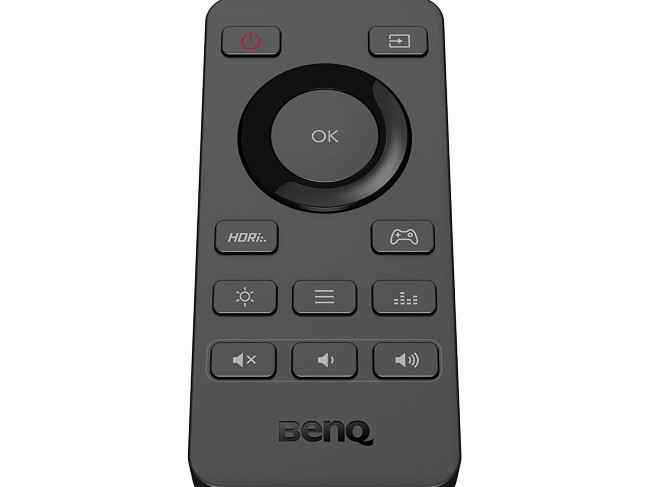
-
The post 7 Tips for Gorgeous Window-Light Portraits appeared first on Digital Photography School . It was authored by Mat Coker . Most ...
-
The post Autofocus Modes in Photography: A Quick Guide appeared first on Digital Photography School . It was authored by Jaymes Dempsey . ...
-
The post Generative Fill in Photoshop: The Essential Guide appeared first on Digital Photography School . It was authored by Ana Mireles . ...
